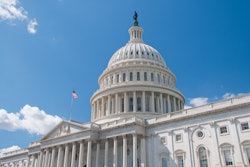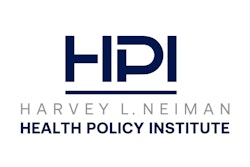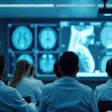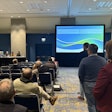Unless mitigating measures are taken, the current supply of radiologists in the U.S. and increased demand for imaging will likely lead to a continued workforce shortage, Harvey L. Neiman Health Policy Institute (HPI) researchers have warned.
"Given the comparable projected levels of growth in supply and demand, the present radiologist shortage is projected to persist unless steps are taken to grow the workforce and/or decrease per-person imaging utilization," said lead author Eric Christensen, PhD, research director at the Neiman Institute, in an HPI statement. The investigators' work was published in two studies on February 12 in the Journal of the American College of Radiology.
A future radiologist shortage has been a point of concern for a number of years, the investigators noted. The objective of their two studies was to "inform the policy discussion surrounding the current shortage of radiologists in the United States by projecting what will happen if current conditions persist and quantifying the impact of multiple factors (i.e., attrition, residency positions, imaging use per person) on future workforce sufficiency" through 2055, the HPI said.
The radiologist supply study used data from the U.S. Centers for Medicare and Medicaid Services (CMS) National Downloadable Files (2014 to 2023) to assess the current supply of radiologists and to model attrition based on years of practice. The team evaluated attrition patterns by gender and by pre- and post-COVID-19 data; it used National Residency Matching Program data (2005 to 2024) to estimate new entrants into the radiology workforce.
In 2023, 37,482 radiologists were enrolled to provide care to Medicare patients, according to Christensen and colleagues. They noted that, if residency positions do not grow after 2024, the projected number of radiologists in 2055 would be 47,119 -- 25.7% higher than in 2023. However, if residency positions do grow after 2024, the projected number of radiologists in 2055 would be 52,591 radiologists, or 40.3% higher. They also found that attrition rates were substantially higher after the COVID-19 pandemic compared with before it.
"Pre-COVID and post-COVID attrition differences are substantial," said contributing author and HPI executive director Elizabeth Rula, PhD. "If attrition rates return to pre-COVID levels, it will equate to 3,116 more radiologists in 2055 compared to our current (post-COVID) trajectory. Hence, monitoring attrition patterns and implementing effective programs to improve workplace well-being, is crucial."
In the imaging demand trend study, Christensen's group estimated future imaging utilization using data regarding U.S. trends in population growth, age distribution, and insurance mix via the Neiman Imaging Comorbidity Index. They also used claims data from 2018 to 2022 from a CMS 5% sample of Medicare fee-for-service beneficiaries and the Inovalon Insights database for people with commercial insurance, Medicare Advantage, or Medicaid; this data included 348,214,053 person-year samples.
The investigators reported the following:
- If recent imaging utilization trends do not persist, projected imaging utilization would be 16.9% to 26.9% higher in 2055 compared with 2023 (with differences by modality).
- If recent imaging utilization trends persist through 2030, the projected imaging utilization in 2055 would range from 5.6% less to 45.2% more.
- Population growth would account for 73% to 88% of utilization increases across modalities in 2055, while population aging would account for 12% to 27%.
- The 75 to 84, 85 to 94, and 95 and older age groups are projected to increase in size by 51.5%, 149.6%, and 282.1% by 2055, respectively.
"Both the projected increase in the number of older individuals and the relative aging of the U.S. population contribute substantially to the projected increased future imaging demand," Christensen said.
Some measures to address a coming imaging workforce shortage are already in the works, Rula explained, noting that HPI is researching how technology such as AI could make radiology workflows more efficient and curb unnecessary or inappropriate imaging orders. The ACR is also developing programs that would "ensure appropriate imaging use and facilitate the development of effective AI to assist radiologists in triage and interpretation," -- and is actively advocating for additional radiology residency slots, she said. She also noted that the ACR's Appropriateness Criteria serves as a guide for referring physicians regarding appropriate imaging, "which can reduce the demand side of the equation," she told AuntMinnie.com.
"We hope that estimates of how these factors each influence future imaging rates will benefit policymakers working to ensure sustainable access and affordability of healthcare," Rula concluded. "Given the strong influence of population demographics on future utilization, we must consider solutions to bend these curves and ensure that outcomes do not deteriorate due to patients not having imaging access or experiencing long delays."
There are a number of strategies that could mitigate the radiologist shortage, according to a commentary that accompanied this study.
"Increased number of residency training positions, improved efficiency in the reading room, and hiring from sources outside of the traditional radiologist training pathway are all potential solutions to address radiologist shortages," wrote Matthew Phelps, MD, and colleague Diana Lam, MD, both of the University of Washington in Seattle.
The two papers shed light on the direction radiologist supply and imaging demand are taking rather than making a prediction regarding a coming radiologist shortage, Christensen told AuntMinnie.com.
"[Our papers address whether] the relative imbalance between supply and demand is improving or worsening," he said. "Clearly, if residency positions grow and all other things are equal, our results show a relative improvement, but they do not inform at what point the shortage is solved."



















